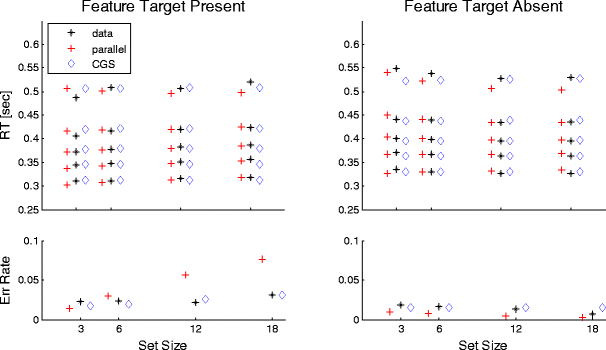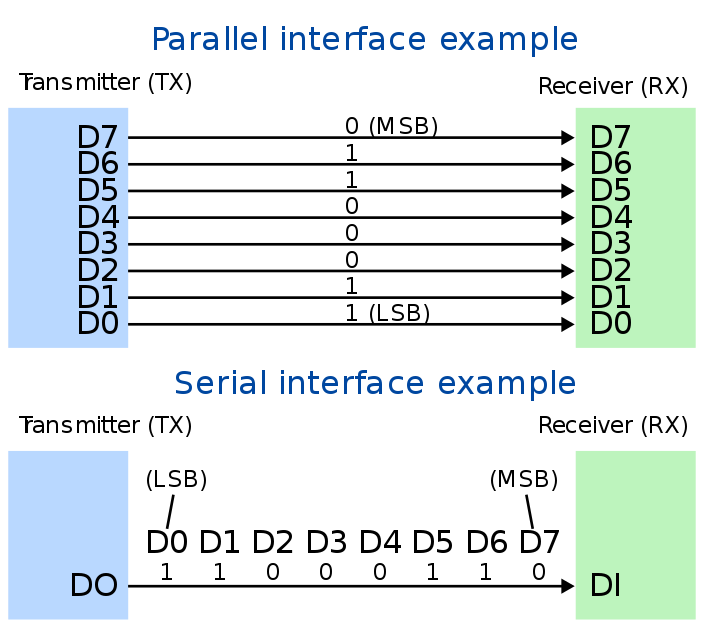Jul 05, 2011 The main difference between serial and parallel ports (of course) is the fact that serial ports send and receive data one bit at a time using a single pair of wires, while parallel ports send and receive data multiple bits at a time using multiple wires. Serial vs parallel processing In serial processing, same tasks are completed at the same time but in parallel processing completion time may vary. In sequential processing, the load is high on single core processor and processor heats up quickly.
SATA hard drive connections are faster than older PATA hard drive connections and the same can be said for external cabling standards, but this is counter-intuitive: why wouldn’t the parallel transmission be faster?
Today’s Question & Answer session comes to us courtesy of SuperUser—a subdivision of Stack Exchange, a community-driven grouping of Q&A web sites.
The Question

SuperUser reader Modest is curious about the data transfer rates of parallel and serial connections:
Intuitively, you would think that parallel data transmission should be faster than serial data transmission; in parallel you are transferring many bits at the same time, whereas in serial you are doing one bit at a time.
So what makes SATA interfaces faster than PATA, PCI-e devices faster than PCI, and serial ports faster than parallel?
While it’s easy to fall into the reasoning that SATA is newer than PATA, there must be a more concrete mechanism at work than just age.
The Answer

Serial Vs Parallel Processing Psychology
SuperUser contributor Mpy offers some insight into the nature of the transmission types:
You cannot formulate it this way.
Serial transmission is slower than parallel transmission given the same signal frequency. With a parallel transmission you can transfer one word per cycle (e.g. 1 byte = 8 bits) but with a serial transmission only a fraction of it (e.g. 1 bit).
The reason modern devices use serial transmission is the following:
- You cannot increase the signal frequency for a parallel transmission without limit, because, by design, all signals from the transmitter need to arrive at the receiver at the same time. This cannot be guaranteed for high frequencies, as you cannot guarantee that the signal transit time is equal for all signal lines (think of different paths on the mainboard). The higher the frequency, the more tiny differences matter. Hence the receiver has to wait until all signal lines are settled — obviously, waiting lowers the transfer rate.
- Another good point (from this post) is that one needs to consider crosstalk with parallel signal lines. The higher the frequency, the more pronounced crosstalk gets and with it the higher the probability of a corrupted word and the need to retransmit it. [1]
So, even if you transfer less data per cycle with a serial transmission, you can go to much higher frequencies which results in a higher net transfer rate.
[1] This also explains why UDMA-Cables (Parallel ATA with increased transfer speed) had twice as many wires as pins. Every second wire was grounded to reduce crosstalk.
Scott Chamberlain echoes Myp’s answer and expands upon the economics of design:

The problem is synchronization.
When you send in parallel you must measure all of the lines at the exact same moment, as you go faster the size of the window for that moment gets smaller and smaller, eventually it can get so small that some of the wires may still be stabilizing while others are finished before you ran out of time.
Serial Vs Parallel Communication
By sending in serial you no longer need to worry about all of the lines stabilizing, just one line. And it is more cost efficient to make one line stabilize 10 times faster than to add 10 lines at the same speed.
Some things like PCI Express do the best of both worlds, they do a parallel set of serial connections (the 16x port on your motherboard has 16 serial connections). By doing that each line does not need to be in perfect sync with the other lines, just as long as the controller at the other end can reorder the “packets” of data as they come in using the correct order.
The How Stuff Works page for PCI-Express does a very good explination in depth on how PCI Express in serial can be faster than PCI or PCI-X in parallel.
TL;DR Version: It is easier to make a single connection go 16 times faster than 8 connections go 2 times faster once you get to very high frequencies.
Have something to add to the explanation? Sound off in the the comments. Want to read more answers from other tech-savvy Stack Exchange users? Check out the full discussion thread here.
Serial Vs Parallel Data
READ NEXTSerial Vs Parallel Processing Psychology
- › How to Use Text Editing Gestures on Your iPhone and iPad
- › Windows 10’s BitLocker Encryption No Longer Trusts Your SSD
- › How to Disable or Enable Tap to Click on a PC’s Touchpad
- › How HTTP/3 and QUIC Will Speed Up Your Web Browsing
- › Motherboards Explained: What Are ATX, MicroATX, and Mini-ITX?